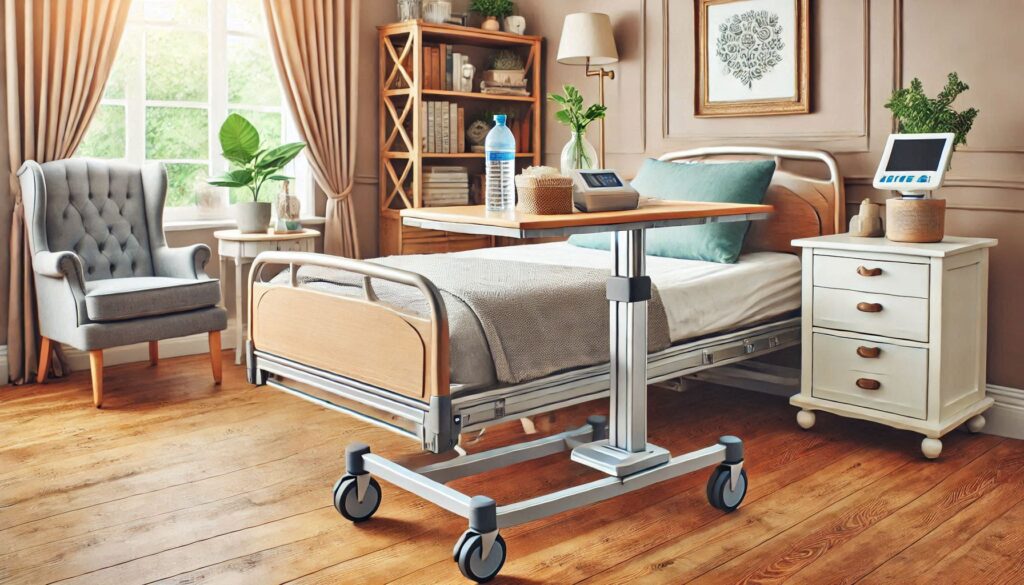Introduction: A Seemingly Simple Object
Imagine a hospitalized patient reaching for their bedside table, a convenient surface holding personal belongings, medication, and a drink. This seemingly simple object plays a crucial role in both hospital wards and long-term care facilities. It’s more than just a place to store items; it significantly impacts patient comfort, independence, and overall care experience. This article explores the design considerations of bedside tables in acute and long-term care settings, highlighting their importance in enhancing patient well-being.

The Bedside Table in Acute Care Settings (Hospital Wards)
In hospital wards, functionality is paramount. The over the bed table with wheels serves as storage for medication, personal items (books, phones, glasses), and medical equipment (IV pumps, call buttons). Good design incorporates ergonomics, ensuring easy access for patients with varying mobility levels. Hygiene is crucial, requiring easy-to-clean materials and durable construction to withstand daily use. Safety is paramount; a stable structure, the absence of sharp edges, and integration with fall prevention strategies are essential. A well-designed adjustable hospital table also enhances patient comfort and a sense of control, offering a degree of autonomy in an otherwise unfamiliar environment.
